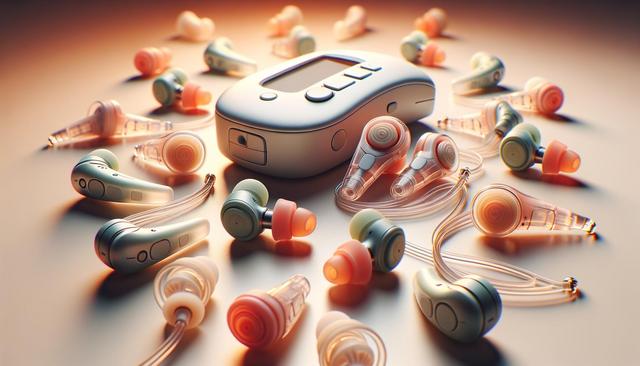What Are Hearing Aids and How Do They Work?
Hearing aids are small electronic devices designed to amplify sound for individuals with hearing loss. They consist of three main components: a microphone, an amplifier, and a speaker. The microphone picks up ambient sound, the amplifier increases the volume of the sound, and the speaker delivers the amplified sound into the ear canal. These devices come in various styles and sizes, ranging from behind-the-ear (BTE) models to completely-in-the-canal (CIC) designs, each catering to different levels of hearing impairment and personal preferences.
Modern hearing aids are equipped with advanced features such as directional microphones, noise reduction technologies, and wireless connectivity. These enhancements help users to better understand speech in noisy environments and connect with devices like smartphones and televisions. Some models even include rechargeable batteries and companion apps for customized settings. While hearing aids do not restore hearing to normal, they significantly improve the ability to hear and communicate effectively.
Common Causes of Hearing Loss
Understanding the causes of hearing loss can help individuals determine when it’s time to seek assistance. Hearing loss can result from a variety of factors, including:
- Age-related hearing degeneration (presbycusis)
- Exposure to loud noises over time
- Ear infections or chronic medical conditions
- Genetic predisposition
- Ototoxic medications that damage the inner ear
In many cases, hearing loss develops gradually, making it difficult to notice until it begins to interfere with daily activities. Warning signs may include frequently asking others to repeat themselves, difficulty understanding conversations in noisy environments, or turning up the volume on electronic devices beyond comfortable levels for others. Early detection and intervention are crucial for maintaining communication skills and overall well-being.
Types of Hearing Aids Available
There are several types of hearing aids available, each with unique characteristics and suitability for different levels of hearing loss. Some of the most common types include:
- Behind-the-Ear (BTE): These rest behind the ear and are connected to an earmold inside the ear canal. Suitable for most types of hearing loss.
- In-the-Ear (ITE): Custom-fitted devices that sit in the outer portion of the ear. Often chosen for ease of use.
- In-the-Canal (ITC) and Completely-in-the-Canal (CIC): Smaller devices that fit partly or completely in the ear canal. These are more discreet but may not have as many features due to their size.
Choosing the right hearing aid involves considering factors like the degree of hearing loss, lifestyle needs, cosmetic preferences, and budget. Audiologists play a key role in recommending the most appropriate device and ensuring it is properly fitted and programmed for optimal performance.
The Importance of Professional Fitting and Support
Getting fitted for a hearing aid requires more than just selecting a device. A professional fitting by a licensed audiologist or hearing specialist ensures that the device is tailored to the user’s specific hearing profile. The process typically includes a comprehensive hearing test, selection of a suitable hearing aid, programming of the device, and education on how to use and maintain it.
Ongoing support is also critical for long-term satisfaction. Users may need adjustments over time to adapt to changes in hearing or to fine-tune the settings for different listening environments. Regular check-ups help maintain the performance of the device and address any issues that arise. Most professionals also provide guidance on cleaning, battery replacement, and troubleshooting common problems.
With proper support, many users find that hearing aids greatly enhance their ability to engage in conversations, enjoy entertainment, and participate fully in social and professional activities.
Maintaining and Caring for Hearing Aids
Proper care and maintenance are essential to ensure the longevity and reliability of hearing aids. These devices are small and sensitive, requiring regular attention to keep them functioning well. Here are some essential care tips:
- Clean the device daily to remove earwax and debris
- Store hearing aids in a dry, safe place when not in use
- Avoid exposure to moisture, extreme temperatures, and hair products
- Change or recharge batteries as recommended
- Schedule routine service appointments with a hearing professional
Many manufacturers provide cleaning kits and storage solutions to assist with daily upkeep. Following the manufacturer’s guidelines and seeking professional help for repairs can prevent damage and extend the device’s lifespan. Users are encouraged to stay informed about software updates or accessory options that could enhance their experience further.


